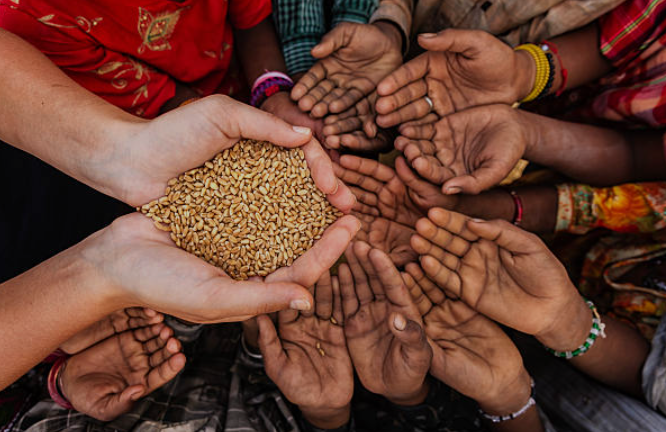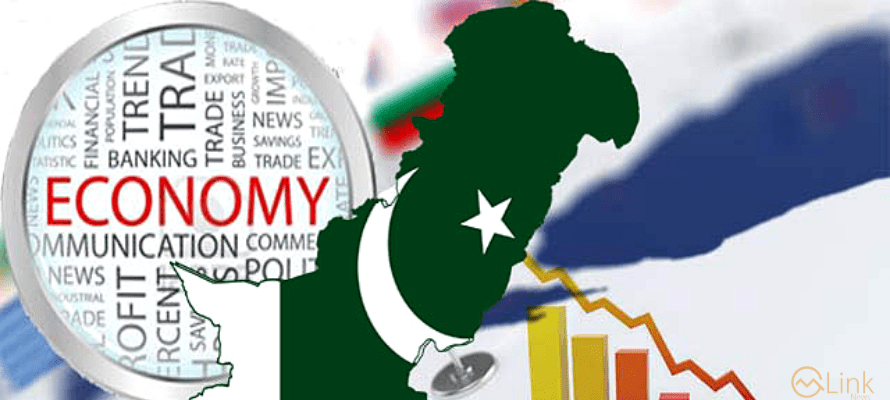Sindh faces persistent food insecurity

By MG News | March 07, 2025 at 09:47 AM GMT+05:00
By: Muhammad Kazim Jafri
March 07, 2025 (MLN): Food insecurity has become a severe problem in Pakistan, the recent report on the food insecurity analysis was released on 23rd May 2024 by UNFAO in collaboration with provincial and federal governments reveals that more than 8 million population which is approximately 24% of 47 selected districts of Pakistan are facing high-level acute food Insecurity (IPC Phase-3).
According to the report, in Sindh, 15 districts were selected in consultation with the Provincial Disaster Management Authority (PDMA) Sindh and other relevant departments, based on vulnerabilities like flood-affected areas, drought situations, etc.
Despite the fertile land of Sindh and its agri-based society, out of 15 selected districts of Sindh, a total of 13 districts are reported severely affected by acute food insecurity situations.
The food-insecurity may be explained as the inability to consistently obtain adequate nutrient-dense food for an active, healthy life.
It is not just about hunger; it is also about not knowing where you will get your next meal.
Food-Insecurity-Experience-Scale (FIES) is the primary indicator to measure food insecurity prevalence.
However, the IPC which is abbreviated as Integrated Food Insecurity Phase Classification is a global tool developed by UNFAO to gauge the food insecurity situation in the broader spectrum.
IPC has different versions of analyses like IPC-AFI, IPC-Chronic, and IPC-Nutrition.
UNFAO has applied these tools in more than 30 counties.
The most conducted analysis in Pakistan is IPC Acute Food Insecurity (AFI) which includes the number of demand and supply indicators including FIES, Household Hunger Score (HHS), Food Consumption Score (FCS), and Coping Strategy Index.
IPC AFI analysis is a set of protocols that categorize the severity and causes of food insecurity.
IPC AFI analysis enables planners and policymakers to take appropriate actions and form actionable policies according to food insecurity situations.
IPC analysis uses wide-ranging evidence that directly and indirectly affects the state of food insecurity in a country or a specific region.
Districts in each province for IPC AFI analysis are selected on the basis of the inputs from concerned PDMAs and NDMA such as droughts, meteorological situations, flood-affected ranking, etc.
UNFAO has invested a significant amount in Pakistan to improve the reporting mechanism of the food insecurity situation of Pakistan and simultaneously built the capacity of government and non-governmental officials of the relevant departments and organizations.
UNFAO invites a large group of officials to conduct IPC analysis from the relevant government and semi-government organizations, and NGOs who work directly and indirectly under the domain of food security.
The main purpose of this exercise is to disseminate inclusive findings and building of consensus among all relevant stakeholders working in this area.
Usually, IPC analysis is based on primary data collection; in this regard, Food Security and Livelihood Assessment (FSLA) is conducted by FAO/ WFP in consultation with government departments.
Along with the findings of FSLA, IPC analysis excessively uses the existing government data sources related to Agriculture statistics, socioeconomic surveys, government administrative data sources, etc.
Pakistan has a good time series of the conducted IPC AFI analyses and Sindh was the first province in Pakistan where the first IPC AFI analysis was conducted in 2017.
So far total of nine IPC analyses have been conducted by UNFAO all over Pakistan and Sindh was part of all IPC AFI analyses.
In the first IPC AFI (2017) analysis which was conducted only in Sindh, a total of four districts (Jamshoro, Sanghar, Tharparkar, Umerkot) were selected and three were classified in Phase-IV (Emergency) while district Umerkot was classified in Phase-III (Crisis) and total 5.44m population was at risk.
The second analysis was conducted in Sindh in April 2019 by using seven districts, four districts (Jamshoro, Sanghar, Tharparkar, Umerkot) were classified in Phase-IV (Emergency) while the remaining districts (Badin, Dadu, Kambarshahdadkot) were classified in Phase-III (Crisis) and total 2.23m population was found at risk.
After two initial IPC AFI analyses, seven more analyses were conducted after COVID-19 from 2021 to 2024.
However, the findings reflect an almost similar situation of food insecurity in targeted districts.
In March 2021, the third IPC AFI analysis was conducted in Sindh.
A total of nine districts were included, namely Badin, Ghotki, Khairpur, Mirpurkhas, Sanghar, Shaheed Benazirabad, Sukkur, Tharparkar, and Umerkot. Except for district Sukkur, all were classified in Phase III (crisis), and around 2.56m population were declared at risk.
Similarly, 7 out of 9 districts were declared as severely food insecure (Crisis) in October 2021 and 2.2m population are classified in Phase III and above.
In September 2022, the situation remained the same; 7 out of 9 districts' populations were classified in Phase III and above the size of the deprived population increased and a total of 5.24m population was flagged at risk.
After the devastating floods of 2022, the next IPC AFI was conducted in April 2023 and a total of 16 highly flood-affected areas were selected, and again except for district Sukkur many districts (15) in Sindh which is almost half of the province were classified in Phase III (Crisis) and more than 6m population was reported in Phase III and above.
In last year (2024), two IPC AFI analyses were conducted first in March and second in November.
In the first analysis of 2024, a total of 15 districts were selected, and out of these, 12 were still declared as severely food insecure (Phase III & above).
The most recent analysis, conducted in November 2024, covered 18 districts due to the availability of data from most districts of Sindh, as the Comprehensive Food Security and Livelihood Assessment (CFSLA) was conducted by WFP in August-September 2024.
The Last exercise is considered as the largest IPC AFI analysis which is conducted by FAO and 15 out of 18 districts are categorized in Crisis (Phase 3) and a total of 4.31m population in those districts are living at risk of food insecurity.
In the light of existing facts, the results of all previous seven analyses are being converged that the problems of food insecurity in some districts of Sindh are persistent.
These analyses help take immediate action in selected districts to control the issue of food insecurity and protect the deprived population.
However, this strategy works in the short term, and we observe the matter remains the same in the long term.
To resolve this issue, we must think from a long-term perspective and focus on underlying causes rather than immediate causes.
According to the literature, it is an economic problem and there are certain underlying factors such as economic factors, environmental factors, political and institutional factors, social and demographic factors, and health-related factors.
If we dive deep into this issue, we observe that our country is experiencing all these issues, and the discussion matter is beyond the statistics.
The said problems may be resolved as the result of good, independent and sustainable governance.
Disclaimer: The views and analysis presented in this article are those of the author, a PhD Scholar at IBA Karachi.
Related News
| Name | Price/Vol | %Chg/NChg |
|---|---|---|
| KSE100 | 130,269.38 65.07M |
-0.06% -74.65 |
| ALLSHR | 81,098.14 159.54M |
0.09% 74.16 |
| KSE30 | 39,851.46 31.49M |
-0.14% -56.80 |
| KMI30 | 189,739.73 38.79M |
0.11% 204.73 |
| KMIALLSHR | 54,837.13 86.76M |
0.10% 53.47 |
| BKTi | 34,765.10 5.89M |
-0.50% -175.64 |
| OGTi | 28,492.30 8.54M |
0.69% 196.25 |
| Symbol | Bid/Ask | High/Low |
|---|
| Name | Last | High/Low | Chg/%Chg |
|---|---|---|---|
| BITCOIN FUTURES | 109,555.00 | 110,105.00 109,200.00 |
-730.00 -0.66% |
| BRENT CRUDE | 68.63 | 69.00 68.41 |
-0.48 -0.69% |
| RICHARDS BAY COAL MONTHLY | 97.50 | 0.00 0.00 |
0.75 0.78% |
| ROTTERDAM COAL MONTHLY | 109.20 | 110.00 108.25 |
1.70 1.58% |
| USD RBD PALM OLEIN | 998.50 | 998.50 998.50 |
0.00 0.00% |
| CRUDE OIL - WTI | 67.00 | 67.50 66.78 |
-0.45 -0.67% |
| SUGAR #11 WORLD | 15.56 | 15.97 15.44 |
-0.14 -0.89% |
Chart of the Day
Latest News
Top 5 things to watch in this week
Pakistan Stock Movers
| Name | Last | Chg/%Chg |
|---|
| Name | Last | Chg/%Chg |
|---|




 Trade Balance
Trade Balance
 CPI
CPI